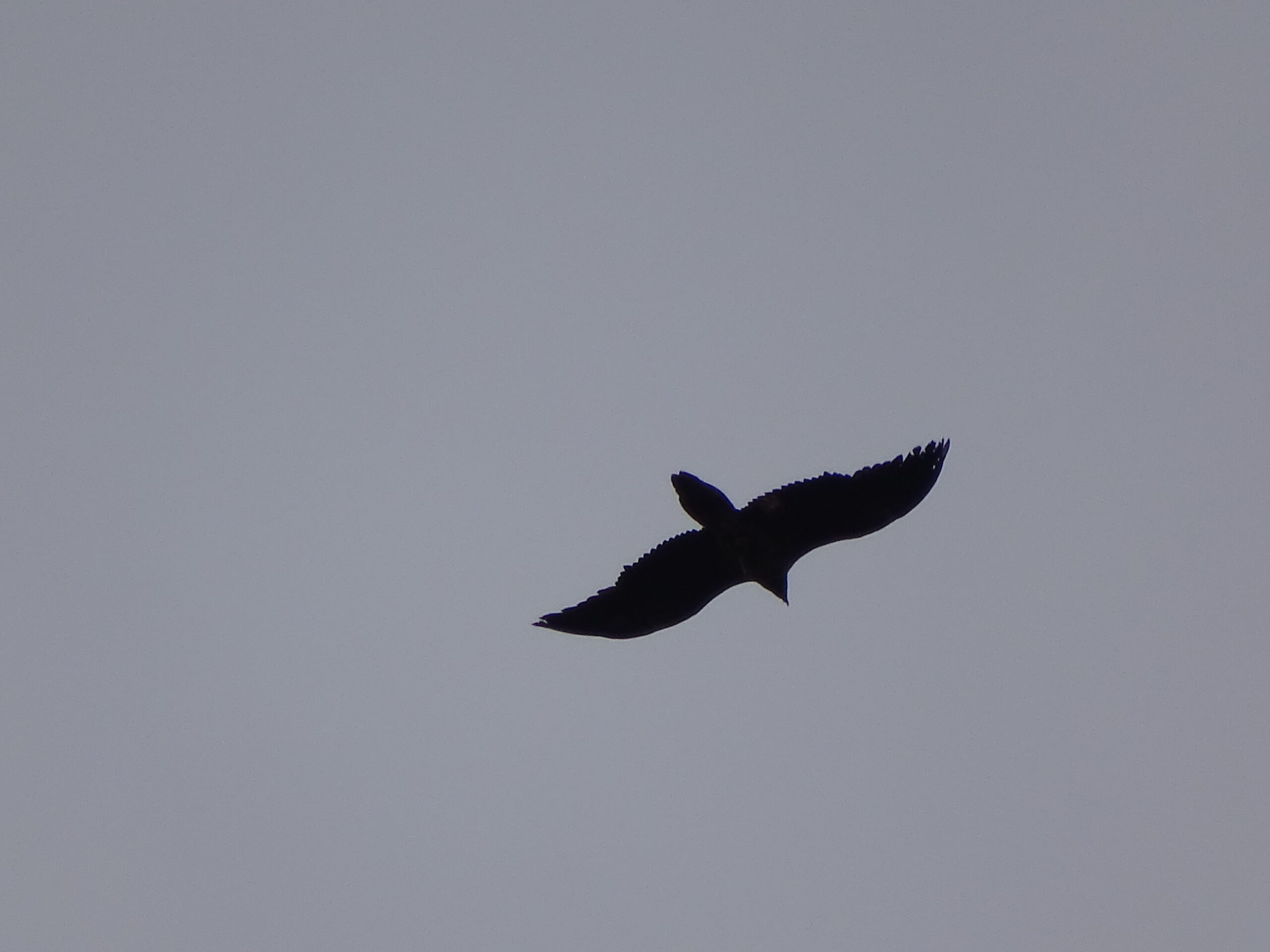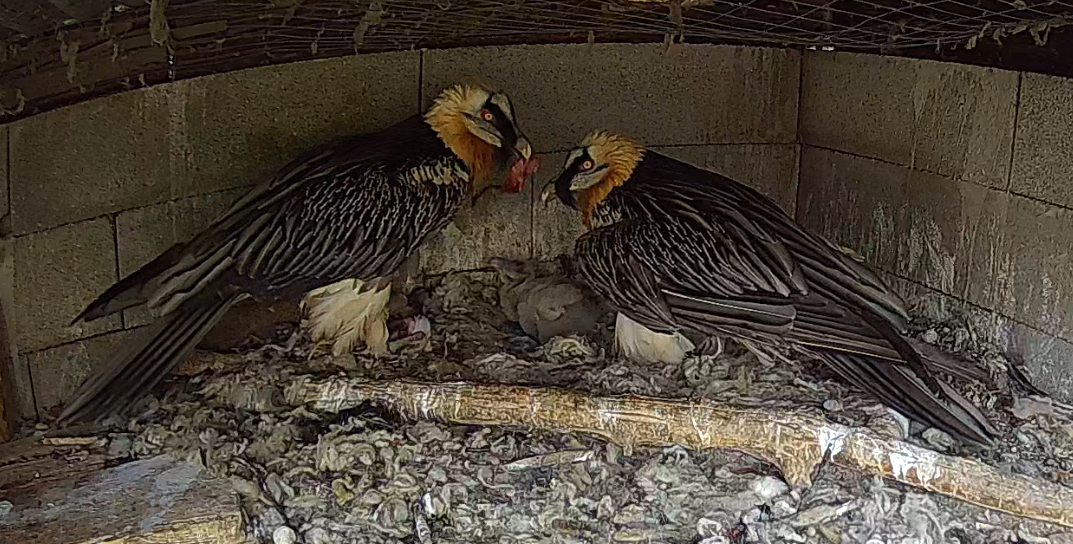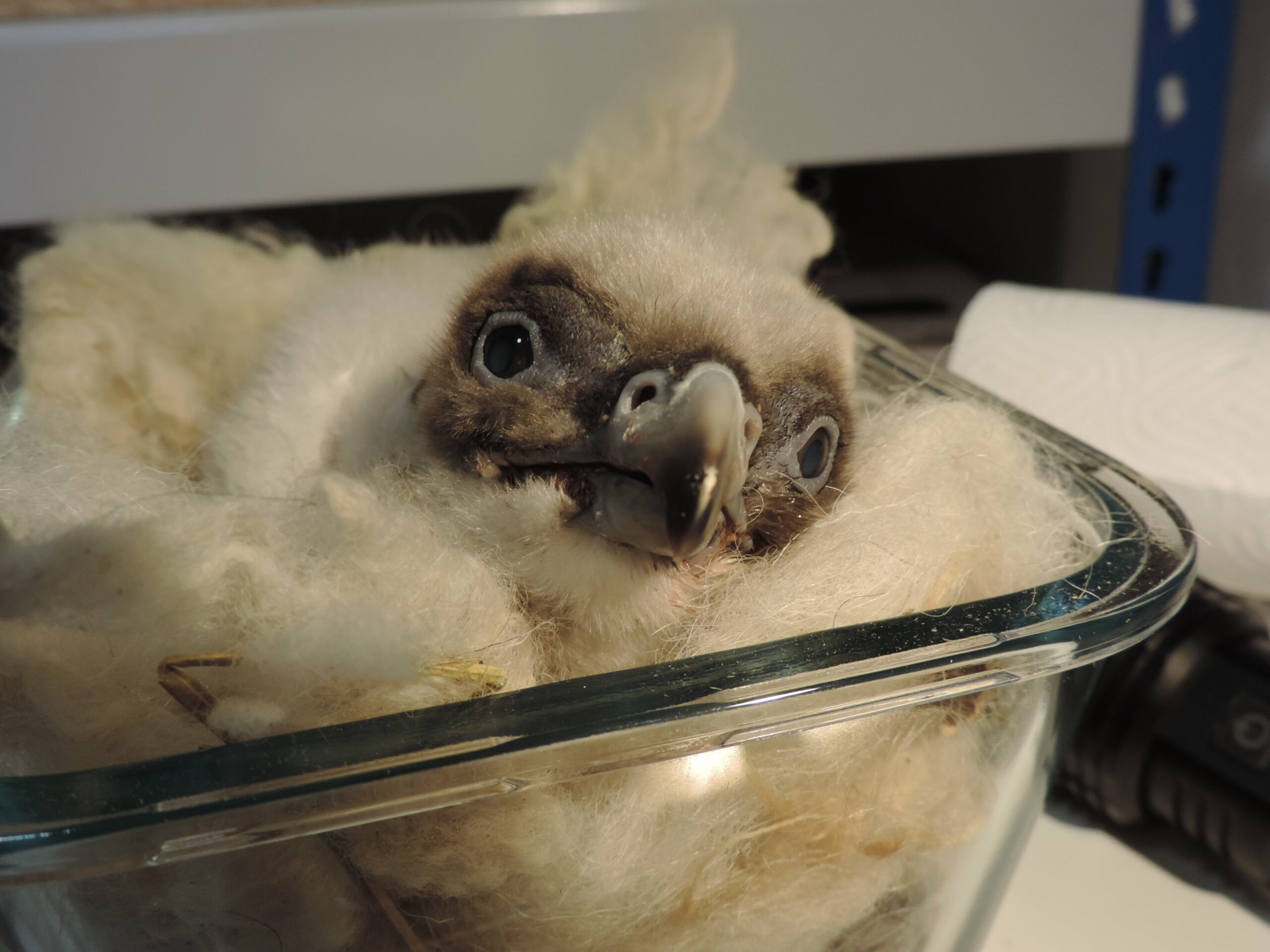
A Bearded Vulture egg produced in a zoo had little chances of hatching as its parents did not have the best track record. So, the Vulture Conservation Foundation (VCF) team formed a plan of action to boost the chances of the chick hatching — and it worked!
Egg produced
A captive Bearded Vulture pair based at ZooParc de Beauval laid an egg once again this year. The male member of the pair, BG763, hatched in 2013 at the Richard Faust Bearded Vulture Specialised Captive Breeding Centre (RFZ) in Austria and is a descendant from a founder female BG482, who only produced one chick. Therefore, the descendant BG763 plays a valuable role for the Bearded Vulture Captive Breeding Network, coordinated by the VCF on behalf of EAZA’s EEP (Bearded Vulture EEP). BG763 is almost like a founder bird, his genetic profile is invaluable, and it is crucial to attain descendants from him. The female member of the pair, BG635, hatched in 2010, and is a descendant from the Almaty zoo breeding pair, and was acquired by ZooParc de Beauval. Some years later, Beauval became a part of the Bearded Vulture EEP and received the male BG763 in 2014.
In 2018, when the male was only five years old, the female laid a double-clutch, but both eggs were infertile. In 2019, they produced a single clutch, but it was also infertile. Finally, in 2020, the first egg of the double-clutch was fertile. Unfortunately, the chick died when it was almost one week old. This breeding season, their egg was fertile again, and we decided to follow the protocol with the highest probability to get a descendant as the genetic value of the father is extremely important. Therefore, as coordinators of the Bearded Vulture EEP, the VCF decided to remove the clutch and transfer it to a centre specialising in artificially incubating eggs.
Egg artificially incubated, chick hatches
Carmen, the VCF’s Bearded Vulture Captive Breeding Assistant, travelled 800 km from Lleida, Spain, to Saint-Aignan-sur-Cher, France, to reach the zoo and collect the egg. Then, she went back to the VCF-managed Specialized Bearded Vulture Breeding Unit at the Recovery Centre Vallcalent, owned by Generalitat de Catalunya. The Centre’s manager, Alex, who is also the Vultures Captive Breeding Manager and the Bearded Vulture EEP Coordinator, is an expert when it comes to artificial incubation. This method involves taking several steps to aid the hatching process, including thermal shock, a protocol developed by the VCF. After a few weeks of artificially incubating the egg, the chick finally arrived! The staff closely kept track of the chick’s progress and hand-reared it in the first few days to ensure it was growing healthily. Then, Carmen hit the road again with the chick, now heading to Cazorla in Andalusia, Spain.
Chick gets adopted
After travelling around 800 km again, Carmen reached the Bearded Vulture captive breeding centre of Guadalentín, currently managed by the VCF, following an agreement with the Junta de Andalucía. This Centre is the most important within the Bearded Vulture EEP. It breeds the most chicks every year and specialises in double adoptions, taking young chicks from other zoos and facilities to ensure natural rearing. Pakillo, Guadalentín’s Manager, welcomed the chick and immediately got to work. Together with the other staff, they checked the chick’s health once again after the long journey and started preparing the process for adoption. Finally, on 14 April, the staff placed the chick in the nest of Viola, an excellent foster parent, who was already rearing another chick, and everything went smoothly. Double adoption requires a special protocol. Bearded Vulture nestlings cannot be in the same nest together due to an evolutionary behaviour called ‘cainism’ where the chicks fight aggressively, leading to the death of the youngest bird. To solve this, Guadalentín builds two nests with a wooden plank separating the chicks, allowing the Centre to naturally rear all chicks as well as take in more from other centres. This action enables captive-bred Bearded Vulture to behave like their wild conspecifics, helping them play an important part to our reintroduction and restocking efforts!
The chick is now growing well, which is an accomplishment achieved thanks to cross-border collaboration and commitment to the conservation of the species — well done to all involved!
Breeding Bearded Vultures for conservation purposes

Back in 1978, the Vulture Conservation Foundation (VCF) and partners united to bring the Bearded Vulture back to the Alps. To achieve this goal, pioneers established a captive-breeding programme to produce chicks and release them into the wild, with the first release taking place in 1986 at the Austrian Hohe Tauern National Park.It took time and perseverance since Bearded Vultures only reproduce when they reach around 8-9 years old, with one chick surviving per year. Still, thanks to these efforts, the species returned to the Alps, making it one of the best wildlife comeback stories of all times! Ever since this success, more projects were launched across France and Spain. Today, the Bearded Vulture Captive Breeding Network, coordinated by the VCF on behalf of EAZA‘s EEP, closely works with over 40 partners, including zoos, to ensure the best breeding results from the 179 birds in captivity. Every year, the VCF and partners release young captive-bred Bearded Vultures into the wild across Europe to reintroduce the species to areas where it went extinct or boost local, vulnerable populations. Up until today, a total of 343 captive-bred Bearded Vultures were freed into the wild.
To follow the news of the breeding season, follow #BeardedVultureBreedingSeason on Facebook and Twitter.




